 W
WAlexander III of Macedon, commonly known as Alexander the Great, was a king (basileus) of the ancient Greek kingdom of Macedon and a member of the Argead dynasty. He was born in Pella in 356 BC and succeeded his father Philip II to the throne at the age of 20. He spent most of his ruling years on an unprecedented military campaign through western Asia and northeast Africa, and by the age of thirty, he had created one of the largest empires of the ancient world, stretching from Greece to northwestern India. He was undefeated in battle and is widely considered one of history's most successful military commanders.
 W
WAbdalonimus was a gardener, but of royal descent, who was made King of Sidon by Alexander the Great in 332 BC.
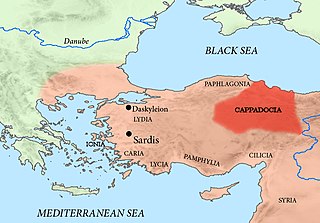 W
WAbistamenes was a governor, or satrap, of Cappadocia, or at least of its southern portions, with Ariarathes I of Cappadocia possibly governing the north. He is called Sabictas by Arrian, and was almost certainly a native Cappadocian.
 W
WThe Afghan Campaign is a historical novel by the American writer Steven Pressfield. It was first published in 2006 by Doubleday. It is the story of Alexander the Great's invasion of the Afghan kingdoms in 330 BC through the eyes of Matthias, a young soldier from Macedonia, who narrates the adventures of the Macedonian army against the Eastern warriors. Matthias fights for Alexander the Great's infantry confronting ferocious people who, determined to defend their homeland, follow tough war methods.
 W
WThere are many legendary accounts surrounding the life of Alexander the Great, with a relatively large number deriving from his own lifetime, probably encouraged by Alexander himself.
 W
WAlexander the Great, a Dramatic Poem is a work by Irish poet and playwright Aubrey Thomas de Vere. It was published in 1874 by Henry S. King and Co. It tells about Macedonian king Alexander the Great and his war against the Persians. The drama was dedicated "To the Memory of Coleridge". It is written in blank verse. There are more than 30 dramatis personae, to say nothing of anonymous soldiers and messengers. According to the authors of the 1911 Encyclopædia Britannica, the drama about Alexander the Great and the second work about St. Thomas of Canterbury "though they contain fine passages, suffer from diffuseness and a lack of dramatic spirit".
 W
WThe Alexandrion, a building of the international "Alexander the Great Institute", is a private institution of Macedonians living abroad. These Greeks, who came from Macedonia, had the idea to erect a monument in their homeland, at the foot of Mount Olympus, near the Temple of Zeus in Dion, a symbol of their bond with their homeland, and at the same time a place of encounter. It was founded in 1992. The head office of the Institute is in New York (USA), the local management is based in Katerini.
 W
WAmastris also called Amastrine, was a Persian princess, and ruler of the city of Heraclea from circa 300 to her death. She was the daughter of Oxyathres, the brother of the Persian King Darius III.
 W
WAriarathes I was the last Achaemenid Persian governor (satrap) of the province (satrapy) of Northern Cappadocia, serving from the 340s BC to 331 BC. He led defensive efforts against the Macedonian invasion, commanded by Alexander the Great, and later fought at the Battle of Gaugamela under Darius III, the last King of Kings of the Achaemenid Empire. After the fall of the Achaemenid Empire, Ariarathes continued his resistance against the Macedonians, ruling concomitantly as an Achaemenid remnant and a precursor to the Kingdom of Cappadocia. He is regarded as the founder of the Iranian Ariarathid dynasty.
 W
WArrian of Nicomedia was a Greek historian, public servant, military commander and philosopher of the Roman period.
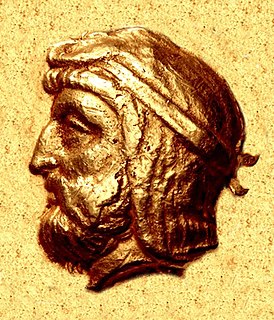 W
WArtabazos II was a Persian general and satrap of Hellespontine Phrygia. He was the son of the Persian satrap of Hellespontine Phrygia Pharnabazus II, and younger kinsman of Ariobarzanes of Phrygia who revolted against Artaxerxes II around 356 BC. His first wife was an unnamed Greek woman from Rhodes, sister of the two mercenaries Mentor of Rhodes and Memnon of Rhodes. Towards the end of his life, he became satrap of Bactria for Alexander the Great.
 W
WThe Attarine Mosque also known as the Mosque of St. Athanasius or the Mosque of a Thousand Columns was a Catholic Church-turned mosque that is situated in the Attarine District in Alexandria, Egypt. The former church was built in 370 AD and is dedicated to St. Athanasius of Alexandria. When Islam came to Egypt, the church was converted to a small mosque.
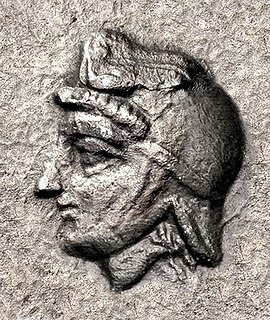 W
WAutophradates was a Persian Satrap of Lydia, who also distinguished himself as a general in the reign of Artaxerxes III and Darius III.
 W
WBalakros, also Balacrus, the son of Nicanor, one of Alexander the Great's "Somatophylakes" (bodyguards), was appointed satrap of Cilicia after the Battle of Issus, 333 BC. He succeeded to the last Achaemenid satrap of Cilicia, Arsames.
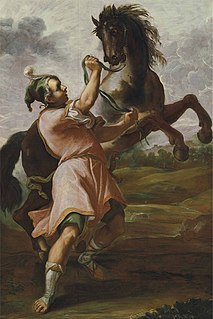 W
WBucephalus or Bucephalas was the horse of Alexander the Great, and one of the most famous horses of antiquity.
 W
WThe Cophen campaign was conducted by Alexander the Great in the Kabul Valley between May 327 BC and March 326 BC. It was conducted against the Aspasioi, the Guraeans, and the Assakenoi tribes in the Kunar valley of Afghanistan, and Panjkora (Dir) and Swat valleys in what is now Khyber Pakhtunkhwa, Pakistan. Alexander's goal was to secure his line of communications so that he could conduct a campaign in India proper. To achieve this, he needed to capture a number of fortresses controlled by the local tribes.
 W
WQuintus Curtius Rufus was a Roman historian, probably of the 1st century, author of his only known and only surviving work, Historiae Alexandri Magni, "Histories of Alexander the Great", or more fully Historiarum Alexandri Magni Macedonis Libri Qui Supersunt, "All the Books That Survive of the Histories of Alexander the Great of Macedon." Much of it is missing. Apart from his name on the manuscripts, nothing else certain is known of him. This fact alone has led philologists to believe that he had another historical identity, to which, due to the accidents of time, the link has been broken. A few theories exist. They are treated with varying degrees of credibility by various authors. Meanwhile, the identity of Quintus Curtius Rufus, historian, is maintained separately.
 W
WDarius III, originally named Artashata and called Codomannus by the Greeks, was the last king of the Achaemenid Empire of Persia, from 336 BC to 330 BC. Artashata adopted Darius as a dynastic name.
 W
WThe death of Alexander the Great and subsequent related events have been the subjects of debates. According to a Babylonian astronomical diary, Alexander died between the evening of June 10 and the evening of June 11, 323 BC, at the age of thirty-two. This happened in the palace of Nebuchadnezzar II in Babylon.
 W
WThe Diadochi were the rival generals, families, and friends of Alexander the Great who fought for control over his empire after his death in 323 BCE. The Wars of the Diadochi mark the beginning of the Hellenistic period from the Mediterranean Sea to the Indus River Valley.
 W
WDrypetis or Drypteis, was a princess of the Achaemenid dynasty in Persia.
 W
WHeliopolis was a major city of ancient Egypt. It was the capital of the 13th or Heliopolite Nome of Lower Egypt and a major religious centre. It is now located in Ayn Shams, a northeastern suburb of Cairo.
 W
WHistories of Alexander the Great is a biography of Alexander the Great attributed to Roman historian Quintus Curtius Rufus, ascribed to the 1st century. Its earliest surviving manuscript, Paris, BnF lat. 5716, was written in the Carolingian period for Count Conrad by the Scribe Haimo in the Loire region in the second half of the ninth century. More fully title is Historiarum Alexandri Magni Macedonis Libri Qui Supersunt, "All the Books That Survive of the Histories of Alexander the Great of Macedon".
 W
WThe horns of Ammon were a symbol of the Egyptian deity Ammon associated with the fossils shells of ancient snails and cephalopods, the latter now known as ammonite because of that historical connection.
 W
WMazaeus, Mazday or Mazaios was a Persian noble and satrap of Cilicia and later satrap of Babylon for the Achaemenid Empire, a satrapy which he retained under Alexander the Great.
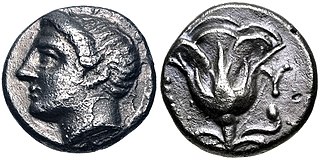 W
WMemnon of Rhodes was a prominent Rhodian Greek commander in the service of the Persian Achaemenid Empire. Related to the Persian aristocracy by the marriage of his sister to the satrap Artabazus II, together with his brother Mentor he served the Persian king for most of his life, and played an important role during the invasion of Alexander the Great and the decades before that.
 W
WMithrobuzanes was a Persian governor (satrap) of Cappadocia in the 4th century BC, during the reign of Darius III. He was probably a son of Ariarathes. As a Persian military commander he was killed at the Battle of Granicus fighting Alexander the Great.
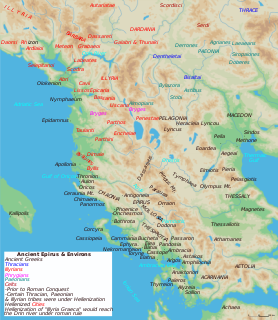 W
WThe Molossians were a group of ancient Greek tribes which inhabited the region of Epirus in classical antiquity. Together with the Chaonians and the Thesprotians, they formed the main tribal groupings of the northwestern Greek group. On their northern frontier, they neighbored the Chaonians and on their southern frontier neighbored the kingdom of the Thesprotians. They formed their own state around 370 BC and were part of the League of Epirus. The most famous Molossian ruler was Pyrrhus of Epirus, considered one of the greatest generals of antiquity. The Molossians sided against Rome in the Third Macedonian War and were defeated. Following the war, 150,000 Molossians and other Epirotes were enslaved and transported to the Roman Republic, overwhelmingly in Italy itself.
 W
WThe Indian campaign of Alexander the Great began in 326 BC. After conquering the Achaemenid Empire of Persia, the Macedonian king, Alexander, launched a campaign into the Indian subcontinent in present-day Pakistan, part of which formed the easternmost territories of the Achaemenid Empire following the Achaemenid conquest of the Indus Valley.
 W
WThe Nature of Alexander (1975) is a nonfiction work by novelist Mary Renault (1905–1983).
 W
WNicocreon was king of Salamis in Cyprus, at the time of Alexander the Great's expedition against Persia.
 W
WOlympias was the eldest daughter of king Neoptolemus I of Epirus, the sister of Alexander I of Epirus, the fourth wife of Philip II, the king of Macedonia and the mother of Alexander the Great. She was extremely influential in Alexander's life and was recognized as de facto leader of Macedon during Alexander's conquests. After her son's death, she fought on behalf of Alexander's son Alexander IV, successfully defeating Adea Eurydice. After she was finally defeated by Cassander, his armies refused to execute her, and he finally had to summon family members of those Olympias had previously killed to end her life. According to the 1st century AD biographer, Plutarch, she was a devout member of the orgiastic snake-worshiping cult of Dionysus, and he suggests that she slept with snakes in her bed.
 W
WOrontobates was a Persian, who married the daughter of Pixodarus, the usurping satrap of Caria, and was sent by the king of Persia to succeed him. On the approach of Alexander the Great of Macedon Orontobates and Memnon of Rhodes entrenched themselves in Halicarnassus. But at last, despairing of defending it, they set fire to the town, and under cover of the conflagration crossed over to Cos, whither they had previously removed their treasures. In addition to the island of Cos, Orontobates, retained control of the citadel at Salmacis, and the towns Myndus, Caunus, Thera and Callipolis together with Triopium.
 W
WPausanias of Orestis was a member of Philip II of Macedon's personal bodyguard (somatophylakes). He assassinated Philip in 336 BC, possibly at the instigation of Philip's wife Olympias, or even his son Alexander the Great. Pausanias was killed while fleeing the assassination.
 W
WPeritas was Alexander the Great's favorite dog, who accompanied him during his military exploits. The name Peritas seems to come from the Ancient Greek word for January.
 W
WPersian Gate or the Susian Gate was the ancient name of the pass now known as Tang-e Meyran, connecting Yasuj with Sedeh to the east, crossing the border of the modern Kohgiluyeh va Boyer Ahmad and Fars provinces of Iran, passing south of the Kuh-e-Dinar massif, part of the Zagros Mountains.
 W
WThe historical and literary tradition describes several of Alexander's relations, some of which are the subject of question among modern historians.
 W
WPhilip II of Macedon was the king (basileus) of the kingdom of Macedon from 359 BC until his assassination in 336 BC. He was a member of the Argead dynasty of Macedonian kings, the third son of King Amyntas III of Macedon, and father of Alexander the Great and Philip III. The rise of Macedon, its conquest and political consolidation of most of Classical Greece during the reign of Philip II was achieved in part by his reformation of the Ancient Macedonian army, establishing the Macedonian phalanx that proved critical in securing victories on the battlefield. After defeating the Greek city-states of Athens and Thebes at the Battle of Chaeronea in 338 BC, Philip II led the effort to establish a federation of Greek states known as the League of Corinth, with him as the elected hegemon and commander-in-chief of Greece for a planned invasion of the Achaemenid Empire of Persia. However, his assassination by a royal bodyguard, Pausanias of Orestis, led to the immediate succession of his son Alexander, who would go on to invade the Achaemenid Empire in his father's stead.
 W
WPhilippeioi, later called Alexanders, were the gold coins used in the ancient Greek Kingdom of Macedonia. First issued at some point between 355 and 347 BCE, the coins featured a portrait of the Greek deity Apollo on the obverse, and on the reverse, an illustration of a biga, a Greek chariot drawn by two horses. They had the value of one gold stater each. In the first issuing, Apollo was depicted with long hair, but after that the design was altered permanently to one in which Apollo's hair was shorter. The coins were intended primarily for large purchases outside of Macedonia. As a result, they spread quickly, first to the Balkans and continental Greece, and eventually throughout the Western world of the time; stashes of philippeioi have been uncovered in Italy, Constantinople, Southern Russia, Cyprus, Syria, and Egypt. The vast majority of these were actually struck by Philip's successor, Alexander the Great. The philippeioi issued by Alexander after Philip's death continued to use that name officially, though they were often called "alexanders" by Alexander's supporters.
 W
WThe Priene Inscription is a dedicatory inscription by Alexander the Great that was discovered at the Temple of Athena Polias, in the city of Priene in Asia Minor in the nineteenth century. It now forms an important part of the British Museum's Ancient Greek epigraphic collection and provides a direct link to one of the most famous persons in ancient history. This inscription about the dedication of a temple by Alexander to Athena Polias, which has been held at the British Museum in London, should not be confused with the Priene calendar inscription also found at Priene in Turkey, which is about Augustus Caesar, and about redefining the calendar around the birthdate of Augustus Caesar.
 W
WThe Ptolemaic cult of Alexander the Great was an imperial cult in ancient Egypt in the Hellenistic period, promoted by the Ptolemaic dynasty. The core of the cult was the worship of the deified conqueror-king Alexander the Great, which eventually formed the basis for the ruler cult of the Ptolemies themselves. The head priest of the cult was the chief priest in the Ptolemaic Kingdom, and years were dated after the incumbents.
 W
WSabaces was an Achaemenid satrap of the Achaemenid Thirty-first Dynasty of Egypt during the reign of king Darius III of Persia.
 W
WSatibarzanes, a Persian, was satrap of Aria under Darius III, king of Persia.
 W
WSide is a city on the southern Mediterranean coast of Turkey. It includes the modern resort town and the ruins of the ancient city of Side, one of the best-known classical sites in the country. It lies near Manavgat and the village of Selimiye, 78 km from Antalya in the province of Antalya.
 W
WSisygambis was the mother of Darius III of Persia, whose reign was ended during the wars of Alexander the Great. After she was captured by Alexander at the Battle of Issus, she became devoted to him, and Alexander referred to her as "mother".
 W
WSpithridates was a Persian satrap of Lydia and Ionia under the high king Darius III Codomannus. He was one of the Persian commanders at the Battle of the Granicus, in 334 BC. In this engagement, while he was aiming a blow from behind at Alexander the Great, his arm was cut off by Cleitus the Black and he subsequently died.
 W
WThe Stag Hunt mosaic is a mosaic from a wealthy home of the late 4th century BC, the so-called "House of the Abduction of Helen", in Pella, the capital of the Macedonian Kingdom. It bears the signature of the Ancient Greek artist Gnosis, of whom very little is known. It is now located in the Archaeological Museum of Pella, Central Macedonia, Greece.
 W
WThe Susa weddings was a mass wedding arranged by Alexander of Macedon in 324 BC in the Persian city of Susa.
 W
WThe Anabasis of Alexander was composed by Arrian of Nicomedia in the second century AD, most probably during the reign of Hadrian. The Anabasis is a history of the campaigns of Alexander the Great, specifically his conquest of the Persian Empire between 336 and 323 BC. Both the unusual title "Anabasis" and the work's seven-book structure reflect Arrian's emulation of the Greek historian Xenophon, whose own Anabasis in seven books concerning the earlier campaign "up-country" of Cyrus the Younger in 401 BC.
 W
WTimoclea or Timocleia of Thebes is a woman whose story is told by Plutarch in his Life of Alexander, and at greater length in his Mulierum virtutes. According to Plutarch's biography of Alexander the Great, when his forces took Thebes during Alexander's Balkan campaign of 335 BC, Thracian forces pillaged the city, and a captain of the Thracian forces raped Timocleia. After raping her, the captain asked if she knew of any hidden money. She told him that she did, and led him into her garden, and told him there was money hidden in her well. When the Thracian captain stooped to look into the well, Timocleia pushed him into the well, and then hurled heavy stones into it until the captain died.
 W
WTimotheus was a famous aulos player from Thebes, who flourished in Macedon during the reigns of Philip II and Alexander the Great. He later accompanied Alexander in his campaigns. After his death, a story about the effect of his music on Alexander became a familiar reference point in literature on the power of music to manipulate emotion.
 W
WThe location of the tomb of Alexander the Great is an enduring mystery. Shortly after Alexander's death in Babylon, the possession of his body became a subject of negotiations between Perdiccas, Ptolemy I Soter, and Seleucus I Nicator. According to Nicholas J. Saunders, while Babylon was the "obvious site" for Alexander's resting place, some favored interring the ruler in the Argead burial at Aegae, modern Vergina. Aegae was one of the two originally proposed resting places, according to Saunders, the other being Siwa Oasis and in 321 BC Perdiccas presumably chose Aegae. The body, however, was hijacked en route by Ptolemy I Soter. According to Pausanias and the contemporary Parian Chronicle records for the years 321–320 BC, Ptolemy initially buried Alexander in Memphis. In the late 4th or early 3rd century BC, during the early Ptolemaic dynasty, Alexander's body was transferred from Memphis to Alexandria, where it was reburied.
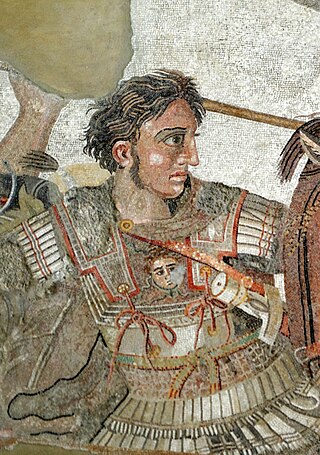 W
WThe wars of Alexander the Great were fought by King Alexander III of Macedon, first against the Achaemenid Persian Empire under Darius III, and then against local chieftains and warlords as far east as Punjab, India. By the time of his death, he had conquered most of the world known to the ancient Greeks. However, he failed to conquer all of South Asia. Although being successful as a military commander, he failed to provide any stable alternative to the Achaemenid Empire—his untimely death threw the vast territories he conquered into civil war.